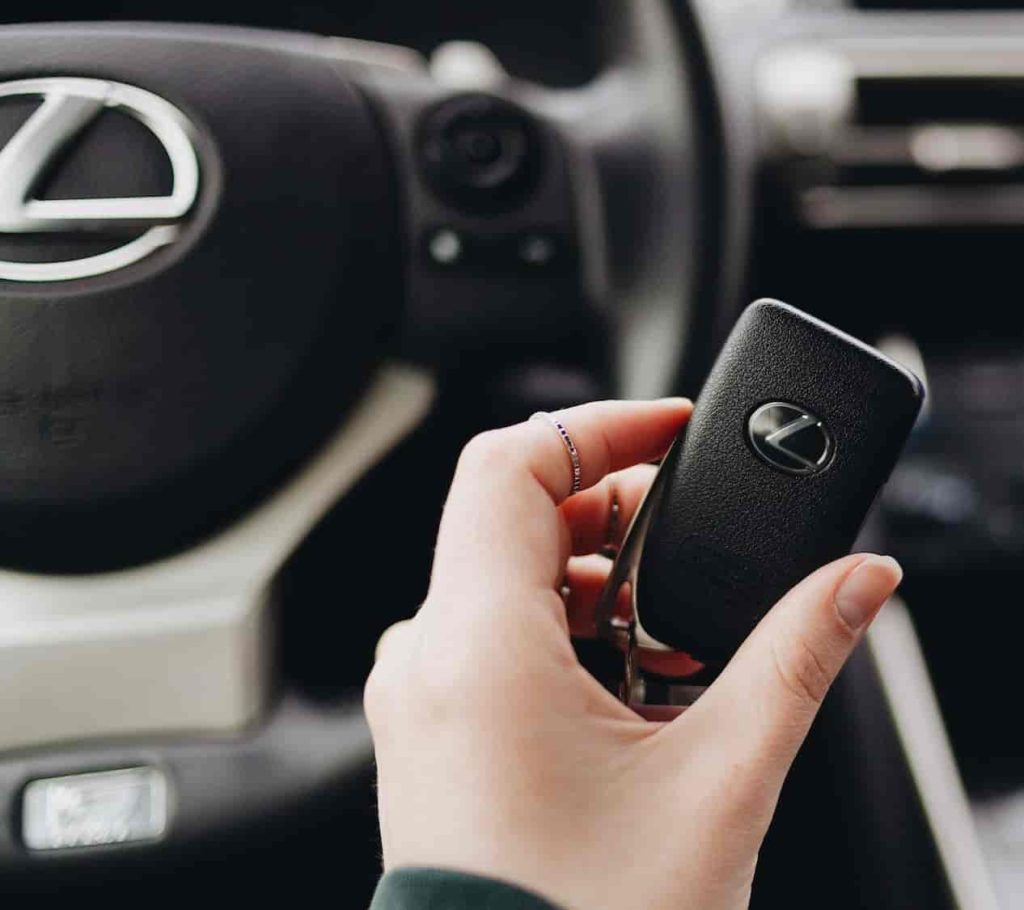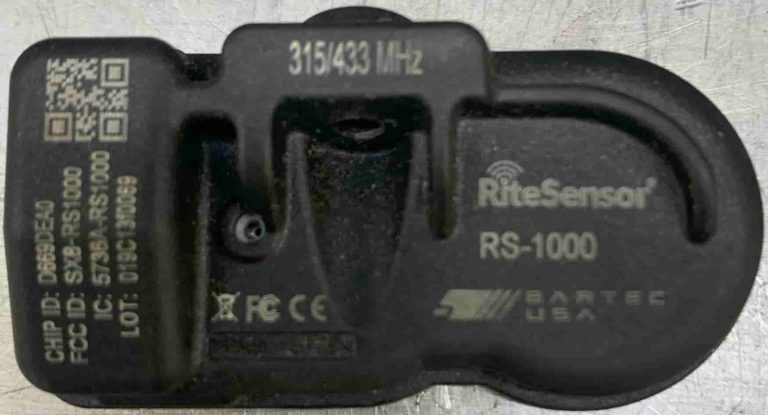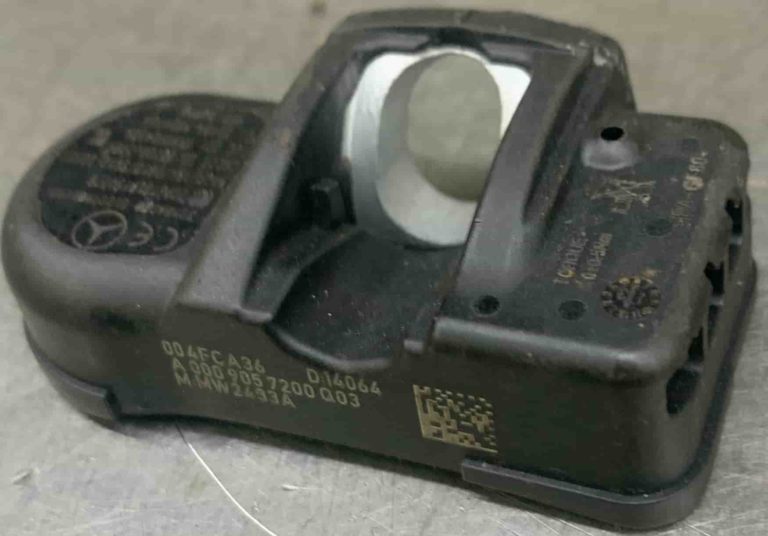Why is the Tire Pressure Monitoring System Important?
Navigating the world of vehicle maintenance can be a daunting task, especially when it comes to understanding complex systems like the Tire Pressure Monitoring System (TPMS) in your Lexus RX350. This integral part of your vehicle’s safety and performance is often overlooked, yet it plays a crucial role in ensuring optimal tire pressure for a smooth and efficient ride. This article aims to shed light on the importance and functionality of the TPMS, how to troubleshoot common issues, and most importantly, how to ensure that it’s working correctly to keep you safe on the road. Dive into this comprehensive guide and take the guesswork out of your vehicle’s tire pressure management.
How Does the Lexus RX350 TPMS Work?
Here is a detailed explanation of how the tire pressure monitoring system works in the Lexus RX350:
Sensors: Each tire, including the spare, has a TPMS sensor embedded in the valve stem. These sensors are radio frequency (RF) transmitters that constantly monitor the air pressure and temperature inside the tire. Each individual sensor has its own unique ID number.
Data Transmission: If the tire pressure drops below the recommended level set by Lexus, typically about 25%, the sensor detects this and sends a signal to the TPMS control module/computer of the car. These sensors also send data to the control module whenever the car is in motion.
Data Interpretation: The TPMS control module, which is essentially the computer that runs the TPMS, receives data from each of the sensors. It then interprets this data to determine whether the tire pressure in any of the vehicle’s tires is too low. The TPMS module knows which tire is which and in which location because of the sensor ID.
Dashboard Indicator: If the TPMS control module determines that a tire’s pressure is too low, it will send a signal to light up a warning symbol on the vehicle’s dashboard. In the Lexus RX350, it’s an exclamation point inside a tire symbol, referred to as the “low tire pressure warning light”.
Action Required: When the driver sees this light, they should take action to inflate the tires to the proper pressure as soon as it is safe to do so. The proper tire pressure for the Lexus RX350 can be found on a sticker on the driver’s side door jamb.
Tire Pressure
How to Check Your Tire Pressure
Make sure the tires are cold. If your vehicle has been driven, wait at least three hours before checking the tire pressure.
Remove the valve cap from the tire.
Press the tip of the tire pressure gauge onto the valve and read the pressure.
If the tire pressure is below the recommended level, fill the tire with air until the recommended 33 Psi is reached. If the tire pressure is above 33 Psi, release air until it’s at 33 Psi.(Press the metal stem in the center of the tire valve to let air out. You can use any object like a screwdriver to do this. Be gentle.)
After adjusting the tire pressure, don’t forget to put the valve caps back on to prevent leaks and keep dirt and moisture out.
Repeat this process for each tire, including the spare if applicable.
What is "Cold" Tire Pressure?
“Cold” tire pressure refers to the air pressure within the tire when it has had ample time to cool down and reach equilibrium with the ambient temperature, typically after being stationary for about three hours or driven less than one mile. This is the optimal state for measuring tire pressure because the heat generated by driving causes the air inside tires to expand, which can give a falsely high pressure reading. It’s important to check and adjust tire pressure when the tires are cold to achieve accurate and consistent readings. This will also prevent overinflation!
Does the Weather Affect Tire Pressure?
The weather plays a significant role in the tire pressure of the Lexus RX350, as it does with any vehicle. When temperatures drop, the air inside the tire contracts resulting in lower tire pressure. On average, for every drop of 10 degrees Fahrenheit, tire pressure decreases by about 1 PSI (Pound per Square Inch). In warmer weather, the air expands causing an increase in tire pressure. Therefore, during seasonal transitions particularly from warm to cold weather, it’s common to see the TPMS light come on, indicating that tire pressure has fallen below the recommended level. It’s crucial for drivers to regularly check and adjust their tire pressure during temperature changes to maintain optimal vehicle performance and safety.
Warning Lights and Saffety Considerations
What Causes the Lexus RX350 Low Tire Pressure Light to Turn On?
Seasonal temperature changes: A drop in ambient temperature can cause tire pressure to decrease, triggering the warning light.
Tire puncture or leak: A sharp object or road debris like a nail or screw may puncture a tire, causing air loss which will of course activate the warning light.
Faulty tire pressure sensor: Damaged or malfunctioning sensors may provide inaccurate readings, resulting in a false alert. The only way to determine which sensor is faulty is to scan each sensor with a TPMS diagnostic tool.
Valve stem issues: A damaged or leaking valve stem can lead to gradual pressure loss and eventual activation of the tire pressure light. They make kits to replace the rubber gasket that usually goes bad.
Tire damage: Impact from potholes or hitting a curb can cause structural damage like tire bubbles, leading to pressure loss.
Sensor battery life: TPMS sensors are battery-powered, and over time, batteries die. (they usually last anywhere from 5-10 years) This will cause the tire pressure light to turn on. Again, you must use a diagnostic tool to determine which sensor is dead or dying.
Recent tire rotation or replacement: If the tires have been recently rotated or replaced, the TPMS may need recalibration to avoid false alerts. The vehicle’s computer may think the front tires are in the rear and rear in the front after a rotation.
Wheel issues: Damaged, corroded, or cracked wheels can lead to air leaks and pressure loss. This is very common with low profile tires.
Altitude changes: Climbing or descending in elevation can affect tire air pressure and trigger the TPMS warning. An additional 1.5 Psi per Km above sea level is required.
Natural pressure loss: Tires lose air pressure over time due to temperature changes and permeation. Tire dry-rot will happen to tires that sit.
Electrical problems or software issues within the car’s TPMS system. Occasionally the system may have a software update from Lexus.
Snow Tires: If you have a separate pair of wheels for your snow tires, you can either transfer the sensors from your summer wheels or acquire an additional set of 4 sensors for the second pair of wheels. However, if you are using the same wheels for both sets of tires, there is no need to be concerned about this.
Is Driving With the Tire Light On Safe?
We don’t advise driving with the tire pressure light on because it can potentially be unsafe. The light is designed to alert you when your vehicle’s tire pressure is significantly low. While you may not notice a major difference in the vehicle’s performance initially, it’s crucial not to ignore this warning. If the light comes on, it’s best to safely pull over as soon as possible and check and adjust your tire pressure.
What are the Impacts of Driving With Underinflated Tires?
Decreased Fuel Efficiency: Underinflated tires increase the rolling resistance, which means the engine has to work harder to keep the car moving. This leads to higher fuel consumption.
Poor Handling: Underinflated tires can negatively impact the car’s handling and responsiveness, making it harder to steer, especially at high speeds.
Increased Tire Wear: Low tire pressure increases the contact area between the tire and the road, leading to faster and uneven tire tread wear, which could mean replacing tires sooner than expected.
Higher Risk of Tire Damage: Underinflated tires are more susceptible to damage such as punctures and blowouts, especially when driving over potholes or driving at high speeds.
Longer Braking Distance: Tires with low pressure may increase the braking distance, potentially making it harder to stop the vehicle quickly in emergencies.
Increased Risk of Hydroplaning: Low tire pressure can also increase the risk of hydroplaning in wet conditions, as the tires may not be able to disperse water effectively.
Reduced Comfort: An underinflated tire can make the ride less comfortable due to increased road noise and vibration.
Resetting and Troubleshooting the TPMS
Lexus RX350 Tire Pressure Light Reset Procedure
Adjust the tire pressure to the recommended PSI.
Park the vehicle and switch the ignition to the ON Position.
Using the arrow buttons on the right side of the steering wheel, scroll over and select the gear icon. (Vehicle Settings)
Use the Down arrow on the steering wheel, scroll down and press and hold the center button.
Hold down the button until the tire pressure light blinks 3 times.
Release the button after the tire light has finished blinking.
After the above steps have been completed, drive the vehicle at 25 mph or more for 15-30 minutes or until the PSI of each tire is displayed on the information display.
What Tools are Needed To Reset the Lexus RX350 TPMS?
The only tool you need is an accurate air pressure gauge. Additional tools are only necessary when the tire pressure system needs troubleshooting. For example, a TPMS diagnostic tool is needed if there’s a TPMS malfunction and you need to identify which tire sensor is faulty or if a tire pressure sensor is replaced and needs to be calibrated.
Resetting the Lexus RX350 ECU
If you’ve tried all possible solutions and the tire light won’t go off, you can try resetting the computer system by disconnecting the battery. To avoid any potential short-circuits, begin by disconnecting the negative terminal. You’ll need a 10 or 12mm wrench or socket to loosen the nut on the terminal. Disconnecting the terminal disrupts the power supply to the Engine Control Unit (ECU) deleting all the error codes accumulated by the computer, including the one causing the tire pressure light to illuminate. Disconnecting the battery will also reset the computer’s adaptive memory settings. Once you reconnect the battery your RX350 has to undergo a “relearning” phase, during which it recalibrates all its sensors and actuators. To complete this relearn phase, drive for at least 30 minutes at a speed of 50 mph.
Troubleshooting the Lexus RX350 Tire Pressure Light
Why is the Tire Light Flashing? (TPMS Malfunction)
Your Lexus RX350 also has a special warning light to alert you to potential issues with your tire pressure monitoring system (TPMS). It’s called the TPMS malfunction indicator. This warning light uses the same yellow exclamation point as the standard tire pressure warning light. If there is a problem with the TPMS, the light will flash for approximately one minute before staying on. This sequence will occur every time you start your car until the issue is resolved. When your tire light is flashing, the system may not be able to accurately detect low air pressure. Basically, a blinking tire pressure light typically signals a malfunction within the TPMS itself, rather than an actual tire pressure concern.
What Causes the TPMS to Malfunction:
Using non Lexus wheels or tires.
Certain electronic devices have the potential to disrupt the TPMS due to their similar radio signal emissions. Devices such as walkie-talkies, radios, or even proximity to a store’s alarm system can induce such interference.
If your RX350 is equipped with particularly dark window tints, they could interfere with the radio signal transmission between the TPMS sensors and the receiver.
If there is a lot of snow or ice on or around the tire valves.
If the tire pressure is extremely high.
If wheels without tire pressure sensors are installed on the car.
If new tire pressure sensors are installed without registering the new sensor IDs with the RX’s receiver module/ECU the vehicle will not recognize them.
Tire Leaks and Solutions
Where is My Tire Leaking From?
Start by checking the air pressure in each tire to determine which one is low on air. Proceed to inflate the underfilled tire. Next, arm yourself with a spray bottle mixed with soap and water (or Windex). Thoroughly drench the entire tire, paying special attention to the bead (the area where the tire connects to the wheel) and the valve stem. Ensure you coat the tire from all sides. Wait for a few seconds, then meticulously inspect the entire tire for any small bubbles. If there’s an air leak and the tire has been sprayed with the soapy solution, the leak will become evident as tiny bubbles escaping from the hole. Utilizing a flashlight can aid in identifying these bubbles. Be patient and look hard, if the tire is losing air, there is a leak!
Are Tire Plugs Safe?
Absolutely. I have personally used tire plugs to fix thousands of tires and have encountered minimal issues. Tire plugs provide a reliable method for repairing punctures in the tread area of a tire. They are designed to be inserted directly into the puncture caused by objects like nails or screws, effectively sealing the hole and preventing air loss. (Of course, the puncture-causing object should be removed initially.) Tire plugs are constructed from durable rubber-like materials and are designed to endure the challenging internal tire conditions, including pressure and temperature fluctuations. When correctly installed, a tire plug will last for the tire’s entire lifespan without the need for replacement. However, do not use a tire plug on the tire’s sidewall.
Are Tire Sealants Safe to Use?
Tire sealants can provide a swift temporary solution for a flat tire on your Lexus RX350 in an emergency situation. However, they aren’t designed for extended use. Keep in mind that these products can destroy your tire pressure sensors, as the sealant might obstruct or clog the sensor. Furthermore, they can inflict damage on the tire that renders it unrepairable or incapable of being plugged. Sealants can also disrupt the tire’s balance, leading to vibrations during driving. Generally, we advise not using tire sealants unless there’s no other option. If you opt to use one, ensure you bring your vehicle to a tire repair shop at your earliest convenience for a proper fix!
Advanced TPMS Topics
How to Install and Calibrate New TPMS Sensors
Remove the tire from the wheel so you can access the sensor. Typically, the base of the old sensor is loosened with a screw and taken off, and then the valve stem is pulled out through the top of the wheel. After the old sensor is removed, you can start putting in the new one. Make sure your new sensor is compatible with the Lexus TPMS module. To install the new sensor, use a valve removal tool to pull the valve through the valve hole in the wheel. Once the new sensor is installed and the tire is back on the wheel, you need to register the new sensor with the vehicle’s Electronic Control Unit (ECU). This is known as the TPMS “relearning” process. During this process, the ECU is programmed with the new sensor’s unique ID number. This enables it to pick up signals from the new device. (It’s a good idea to take a photo of each new sensor’s ID number before putting them in, as these numbers might be needed later and once the tire is back on the wheel you can’t see the sensor.) This step requires a TPMS relearning tool. You’ll need to scan each of the tire pressure sensors, and then allow the tool to sync with the vehicle’s ECU. This is typically done by connecting the TPMS tool to the OBD2 port beneath the steering wheel.
Tire Pressure Sensor Batteries
Tire pressure sensors are equipped with built-in batteries that power their operation. These batteries are designed to last for several years, often matching the average lifespan of a tire, which is approximately 5 to 10 years. However, the longevity of these batteries can be influenced by factors such as driving conditions, mileage, and temperature extremes. Once these batteries deplete, the TPMS sensor becomes non-functional and must be replaced. The batteries are enclosed inside the plastic casing of the sensor and are not replaceable. It’s crucial to note that a failing or dead battery can result in inconsistent TPMS readings and the tire pressure light will flash.
TPMSand Legal Considerations
Are TPMS Sensors Legally Required?
Tire Pressure Monitoring System sensors are legally required in many regions worldwide, including the United States and Europe. The U.S., under the TREAD Act of 2000, mandates all vehicles manufactured post-September 2007 to have a TPMS. However, this applies primarily to manufacturers, not drivers, with the objective of enhancing road safety by alerting drivers to significant tire pressure changes. In Europe, regulations from November 2012 require all new passenger vehicles to be equipped with a TPMS, with no specification whether the system should be direct or indirect. These mandates aim to prevent accidents caused by tire failures.
Will My Lexus RX350 Pass State Inspection With the Low Tire Pressure Light On?
Yes. In certain states, the tire pressure monitoring system is inspected during a vehicle’s safety examination, but the specific requirements can vary. For example, in New York, the tire pressure light is assessed as part of the inspection process, but it is not a cause for failure. In Texas, the TPMS is checked during the safety inspection, and while it not being functional is not grounds for inspection failure, it is expected to be functioning properly. I am personally a licensed New Jersey state inspector and in NJ having a functional TPMS is not a requirement. If the tire pressure light is on, I will still pass the vehicle and let the owner know that they need to check their tire pressure. Commercial vehicles are a different story because they still require “safety inspections”. The lack of uniformity between states means it is recommended to check with your local Department of Motor Vehicles or other relevant state agencies for the most accurate and up-to-date information.
Conclusion
Understanding the functionality of the TPMS in your Lexus RX350 is crucial for maintaining optimal vehicle performance and ensuring your safety on the road. This comprehensive guide should help you better comprehend how your vehicle’s TPMS works, how to identify and troubleshoot potential issues, and how to maintain the right tire pressure. Remember, regular tire pressure checks and adjustments, coupled with prompt action when your TPMS light comes on, can significantly extend the life of your tires, improve fuel efficiency, and most importantly, keep you safe while driving. Don’t ignore your TPMS – it’s a crucial system that’s designed to help you monitor and manage your vehicle’s health.





